This was first published in Sanctuary Magazine Issue 64
You are probably familiar with fruit cordials; perhaps you even have a family recipe that comes out in time for summer. But did you know that delicious drinks can be made using wild floral infusions? Mara Ripani introduces three of her favourites.
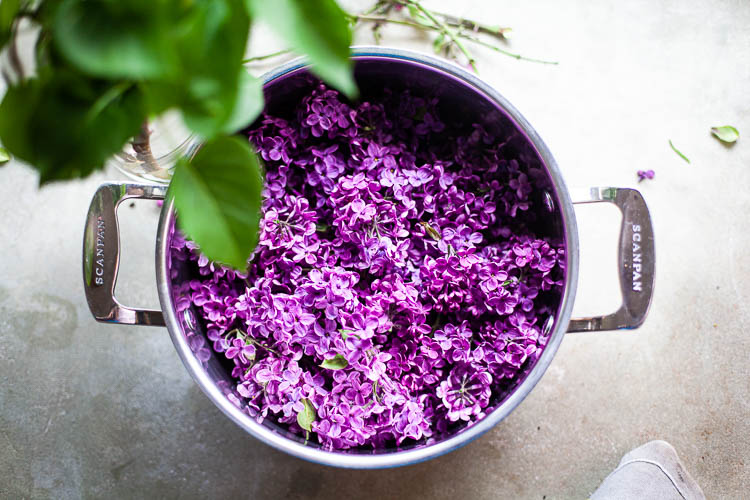
There exists enormous potential to create unusual floral syrups from a broad range of plants. These syrups are sweet infusions made with flowers or buds from shrubs and trees, akin to berry and herbal syrups.
My passion for creating them began when I was living in Melbourne and cycling everywhere; for me, foraging became synonymous with cycling. When you are out in the elements, seasonal changes wrap you in a blanket of fragrance as you ride, and pulling over to harvest fruit and flowers for making jams and syrups is an attractive adventure.
Three of my favourite floral syrups are mugolio (made from pine buds or cones), lilac, and callistemon-melaleuca. Each has a distinctive flavour and colour and can be used to flavour many things, from summer drinks to roasts and salads.
Three floral syrups
All these recipes require sterilised jars or bottles. In addition, to make syrups shelf stable (able to be stored at room temperature for weeks or months), you will need to process them in a hot water bath; otherwise, they must be stored in the fridge. There are plenty of online resources to help you learn how to sterilise jars and run your syrups through a hot water bath.
Mugolio
Mugolio is a sweet syrup that’s very similar to maple syrup, made from fermented pine buds or cones. The name comes from Pinus mugo, a low-growing coniferous tree that grows at high elevations in Europe, such as in the Italian Dolomites. To make mugolio, buds are harvested in spring when they are open and full of pollen. Here in Australia, mugolio can be made using radiata pine (Pinus radiata) cones harvested in spring or early summer when they are green and full of water.
How to identify radiata pine
Although they are not native, radiata pine trees are very common in Australia. Look for trees with a tall columnar trunk with deeply furrowed dark brown to black bark. They grow up to 50 metres tall. The leaves are needle-like and clustered in groups of three, enclosed within a sheath at their base. Radiata pinecones are roughly egg-shaped with an angled base.
When to harvest cones
Harvest cones as soon as they appear in spring or early summer. They are often high up in the tree canopy, so pick smaller trees whose cones can be reached with a ladder. Pack them into a basket, take them home and (ideally) work with them immediately so that they don’t dry out. Alternatively, place them in a sealed container in the fridge until you can use them. Cones should be easy to cut. If they are very hard, they are too old for making syrup.
How to make mugolio
You will need about 10 to 15 fresh green pinecones, raw sugar, and sterilised glass jars capable of holding your harvest (for example, a couple of two-litre capacity jars). Cut the cones into eight or more pieces; smaller pieces allow you to fit more pinecones into your jars and increase the flavour intensity of the mugolio. Arrange cut pinecone pieces in a one-centimetre layer at the bottom of your jars, then cover with a one-centimetre layer of sugar. Repeat to the top of the jar (a lasagna effect!) and make the last layer sugar.
You want all the pinecone pieces to be completely covered in sugar. The sugar will wick the water present in the pinecones and extract it. Within hours, the bottom of the jar will be filled with a sugary liquid as this process begins. After a day or so, the pinecones will be submerged in a dark-coloured syrup. Leave the jar sealed in a warm place (20 to 25 degrees Celsius) and wait for fermentation to occur. If the pinecones float, weigh them down with a small ceramic or glass dish. After a few days, check for bubbles.
Allow the brew to ferment for two weeks. Strain out the cone pieces and place the syrup in sterilised bottles, then store in the fridge or process using a hot water bath to make it shelf stable.
Callistemon-melaleuca syrup
Callistemon-melaleuca syrup is made from the flowers of these common native plants, combined with either honey or sugar.
How to identify callistemon and melaleuca
Melaleuca trees are often referred to as paperbarks due to the texture of their bark, and callistemon varieties are often called bottlebrushes; they can be either shrubs or tree-sized. The flowers of both are brush-shaped and arranged in spikes on heads at the end of branches. They are filled with fragrant pollen-rich stamens and come in white, red, lemon, yellow and pink.
When to harvest
Harvest flowers in spring and right through to autumn. Use secateurs to harvest around 40 flowerheads for a batch of syrup, leaving plenty behind for wildlife.
How to make callistemon-melaleuca syrup
Use a one-litre capacity sterilised jar. Add 1.5 cups of raw sugar or honey to the jar. Boil one litre of water for 10 minutes and allow it to cool. Once cooled, add just enough water to the jar to dissolve the sugar or honey, and stir well. Now remove the stamen clusters from the flower ‘cores’ and pack the clusters very tightly into the jar, leaving a two-centimetre gap between the top of the jar and the lid. Top up with the boiled, cooled water until all the flowers are submerged and the water level reaches the very top of the jar. Weigh down flowers with a ceramic dish.
Place in a warm place, lid firmly on, with a dish underneath to catch any spills caused by fermentation. Bubbles should appear after a week if kept in a warm place (20 to 25 degrees Celsius). When fermentation has occurred, strain and collect the syrup in sterilised bottles. Place syrup in the fridge or process in a hot water bath.
Lilac syrup
A sweet and slightly bitter syrup can be made from lilac flowers (Syringa vulgaris) mixed with honey or sugar. Do not confuse Syringa vulgaris (Common Lilac) with Melia azedarach.
How to identify lilac
Lilac is a shrub in the olive family (Oleaceae), with a messy irregular form up to about six metres high and two metres wide. Its most distinctive feature is its flowers, which are grouped in panicles between 10 and 20 centimetres long. Each flower has four distinct petals in a variety of light purple hues, and a strong, sweet fragrance.
When to harvest
Harvest lilac flowers in early spring when they are vibrant, new and fresh. Cut the base of each panicle and place in a tea towel-lined basket. Collect 20 panicles for a batch of syrup.
How to make lilac syrup
Place all flowers minus stems in a large pot and cover with water. Bring to the boil and boil for five minutes. Allow to cool, cover, and place in the fridge for a day. Strain flowers and keep the liquid. Return the liquid to the original pot and heat to a simmer. Add two cups of honey or sugar, taste and add more sweetness according to your preferences. Add lime or lemon juice (or a combination of the two) until the syrup has a very distinct acidity. Add a few drops of vanilla extract. Place hot, sweet, lemony syrup into hot sterilised jars, leaving a one-centimetre gap between the syrup and the lid. Process in a hot water bath for ten minutes, allow to cool and store.
How to use your floral syrups
I really enjoy having floral syrups in my larder. They keep me connected to the place where I live as well as to my Italian roots, and make for interesting harvest stories and delicious food experiences.
Mugolio can be drizzled over a roast just before it’s removed from the oven. It’s also delicious in salad dressings, as a topping on pancakes or over roasted nuts, or included in hot chocolate, cocktails and summer drinks. Lilac syrup adds a sweet and tangy note to salad dressings and can also be used on roasts by drizzling it over in the last 15 minutes of the cooking time (not too much though, because it has some bitter undertones). It’s also great in smoothies and cocktails, or mixed with water, soda or tonic as a cordial; these are the best ways to enjoy callistemon-melaleuca syrup too.
Why not make some floral syrups and find your own favourite uses?
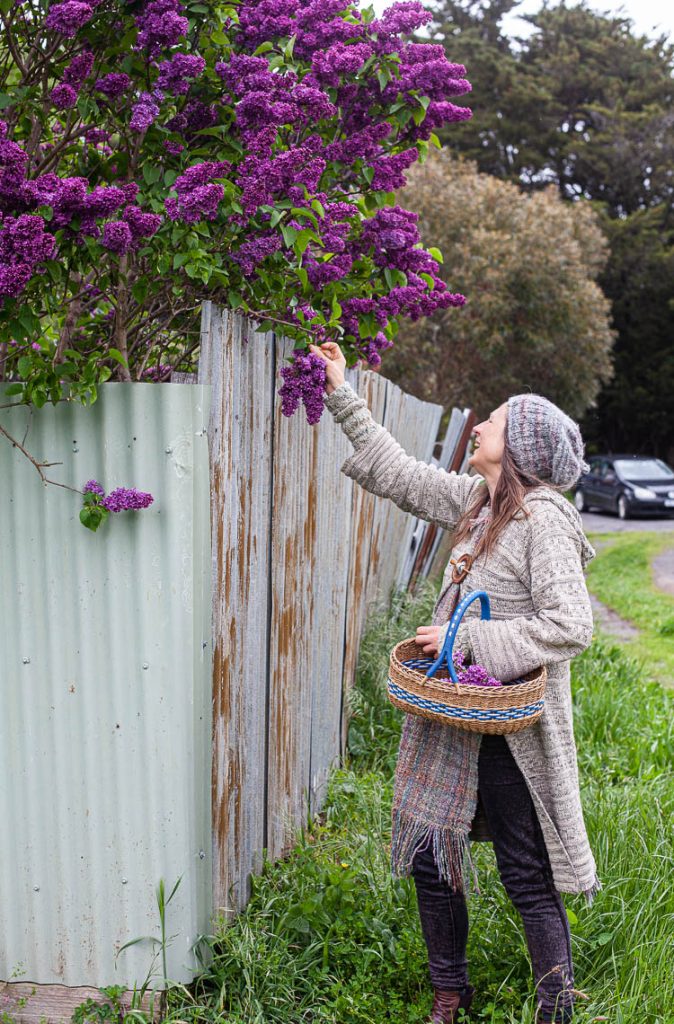
Harvesting lush lilac blooms for syrup.
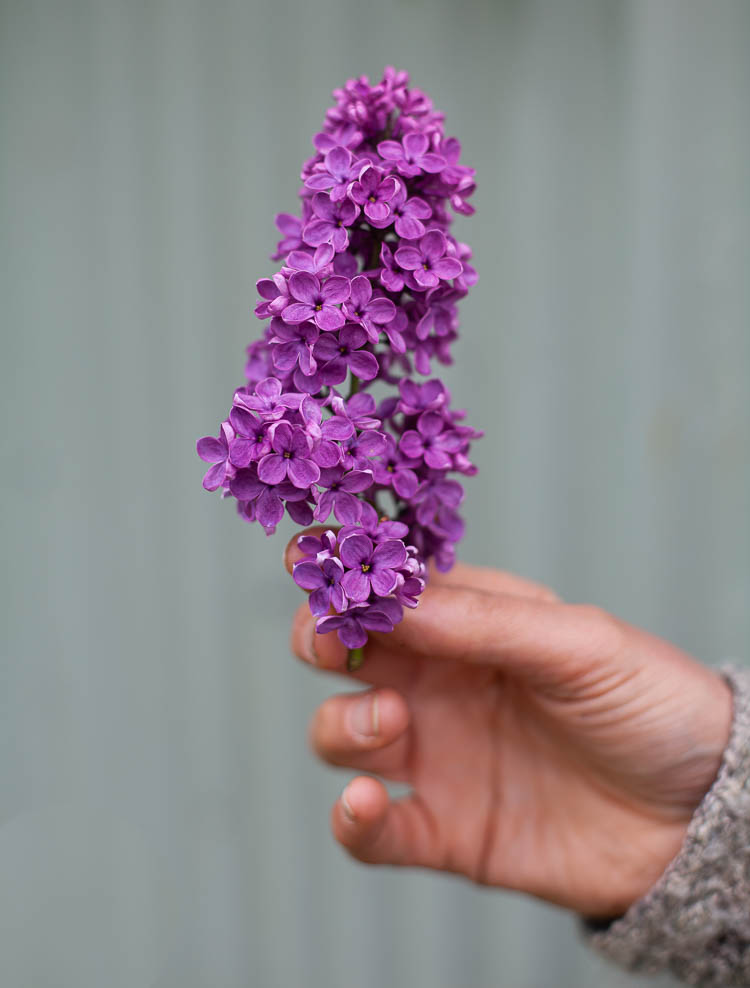

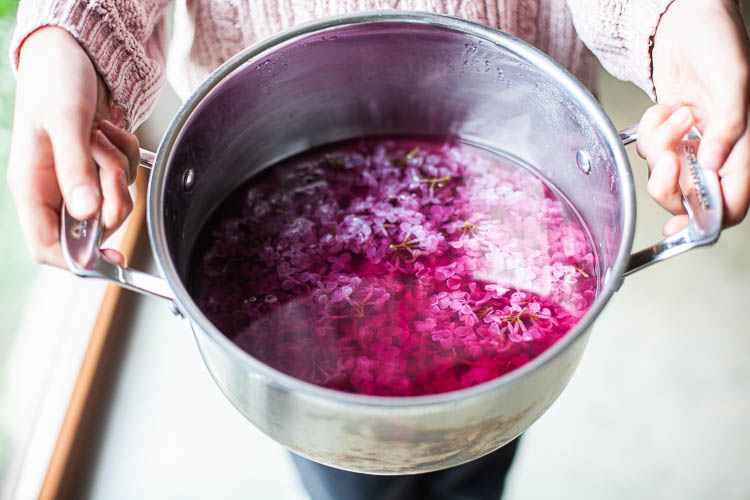
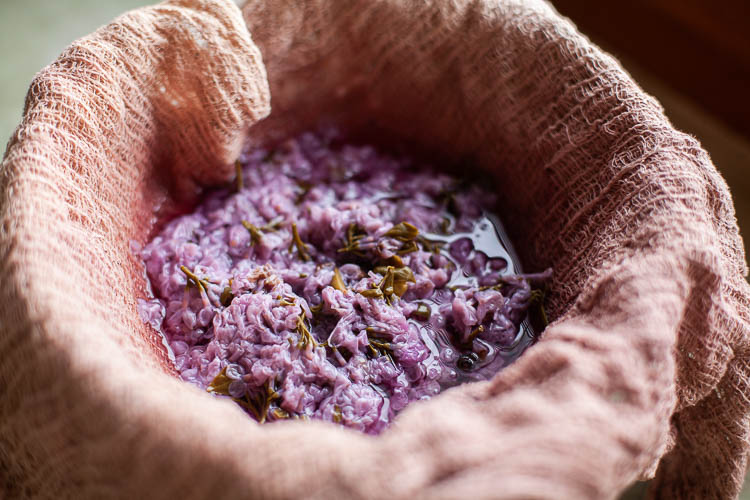
Once lilac flowers have been boiled in water and allowed to steep overnight, they are strained out and the vibrant liquid sweetened and tempered with lime or lemon juice to form a sweet, slightly bitter syrup that’s great for a range of uses.
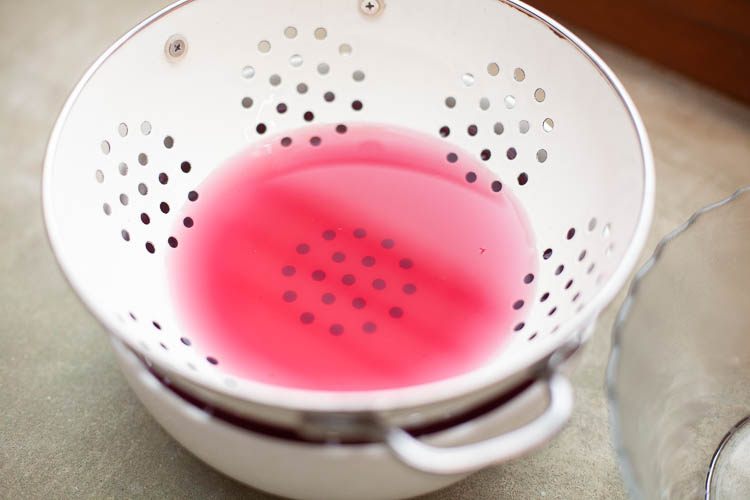
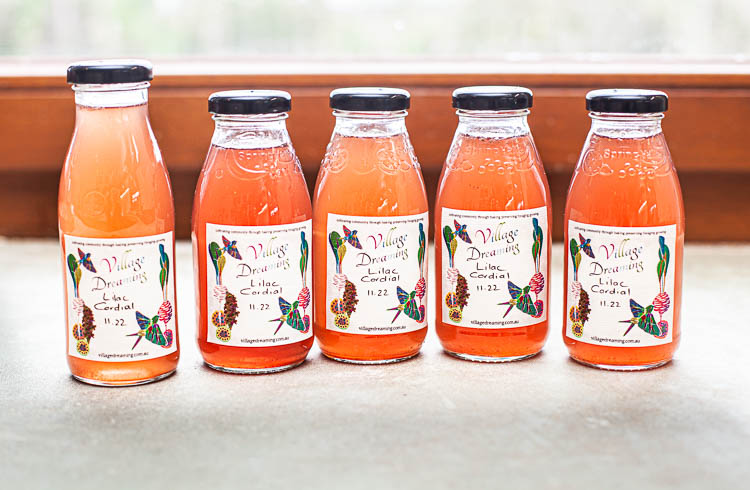
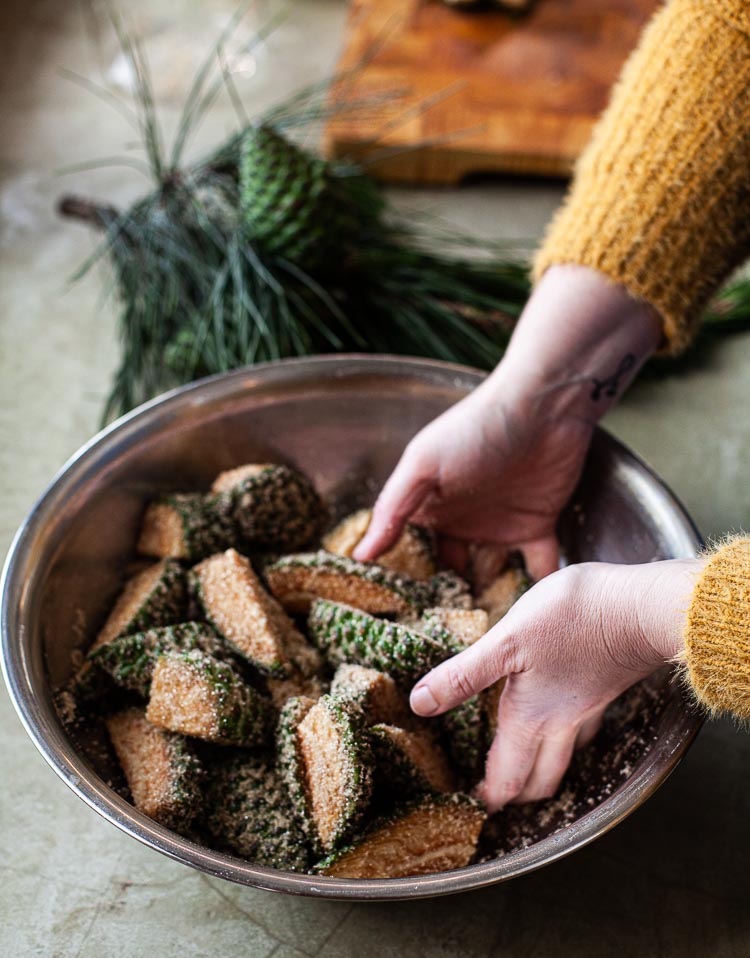
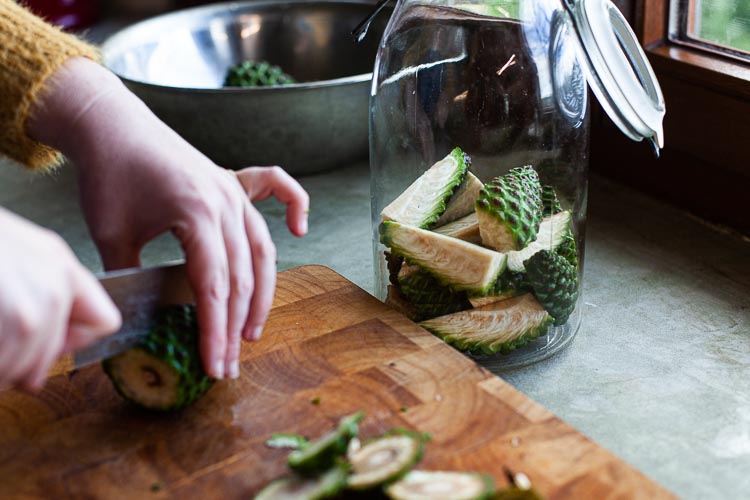
It can be surprising what unlikely plants make for delicious syrups. Mugolio is made by steeping young pinecones in a sugar and water mixture and letting it ferment gently.
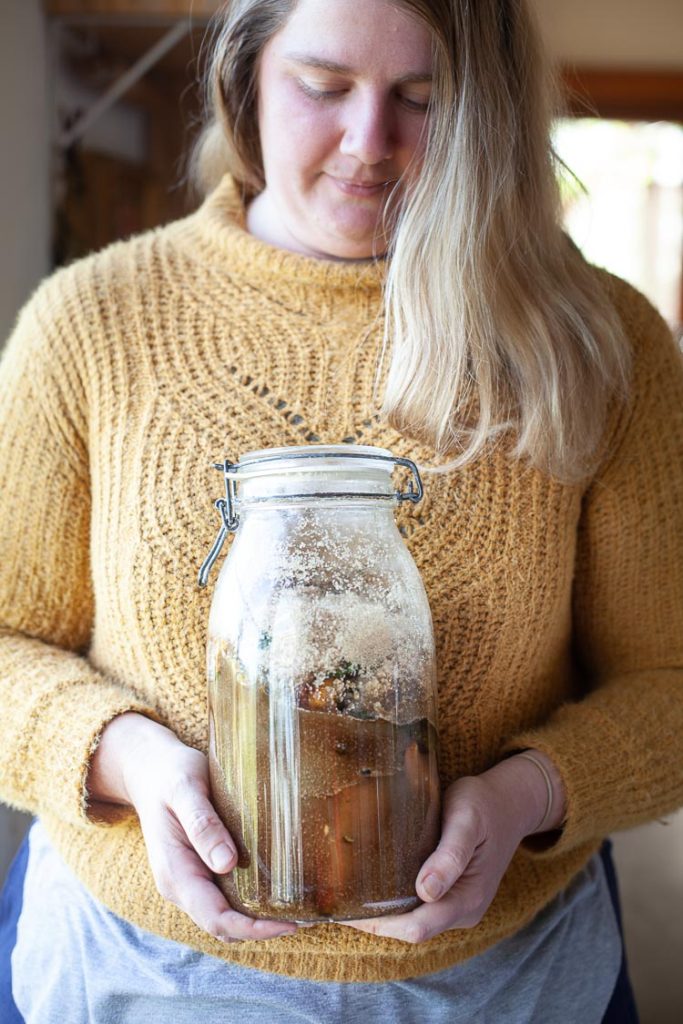
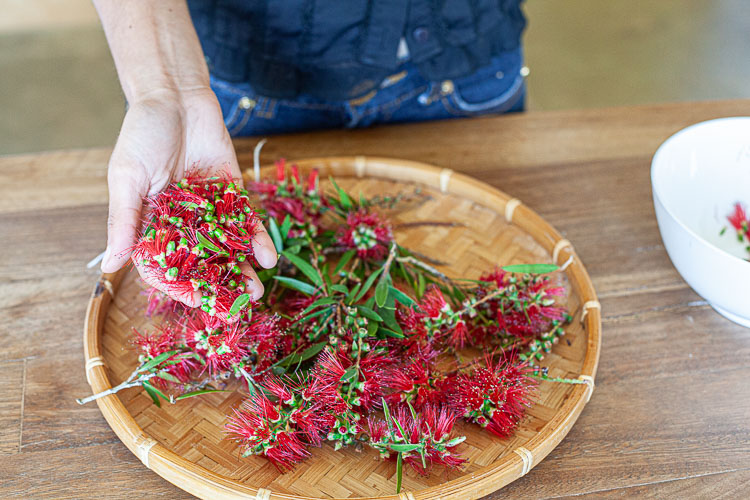
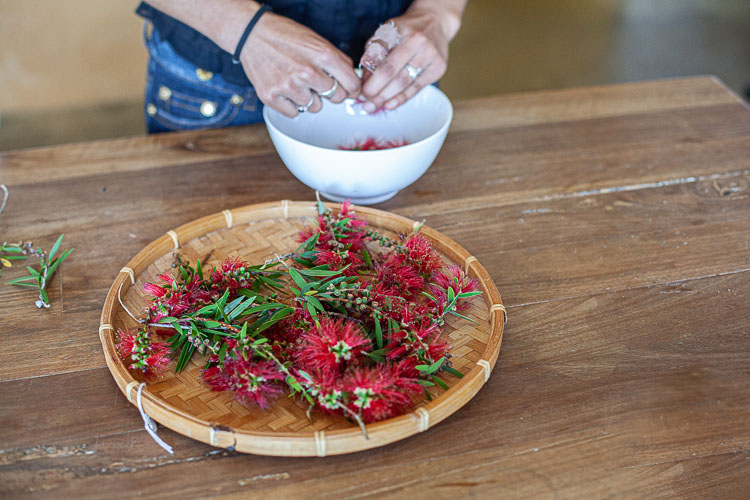
Callistemon flowers, commonly known as bottlebrush, make a sweet syrup that’s ideal for spicing up smoothies and cocktails, or enjoying as a cordial.
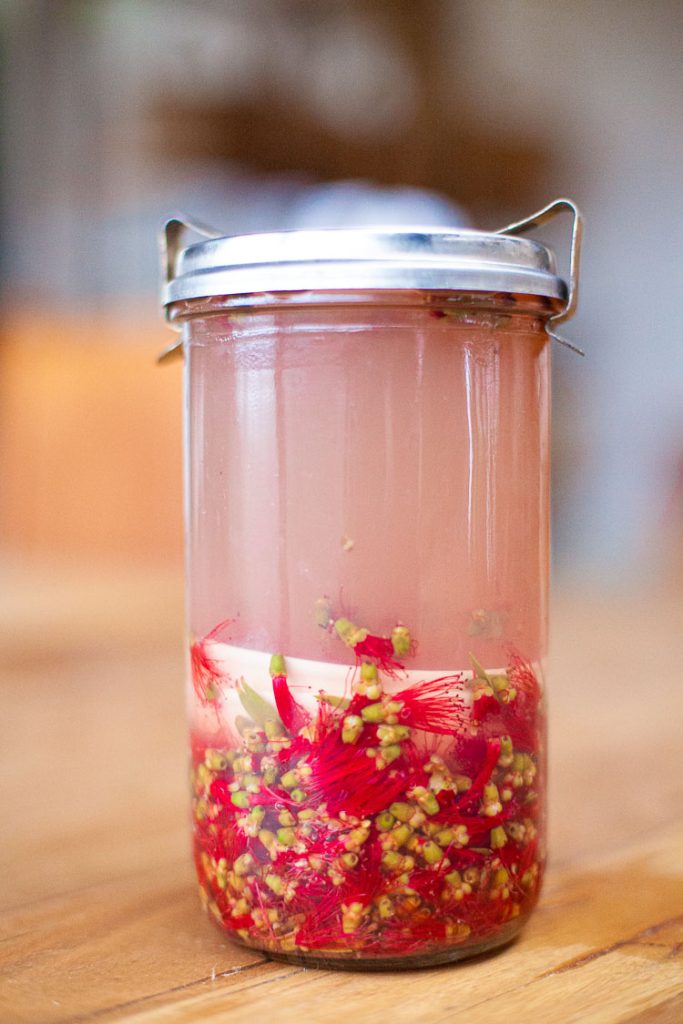

0 Comments